With its striking shape and glossy, golden-brown surface, Sourdough Discard Challah is a true showstopper. This soft, pillowy bread is not just beautiful but also bursting with flavor, and it’s entirely dairy-free. The sourdough discard imparts a delightful tang that elevates the richness of this eggy bread, combining it with yeast makes this recipe quick to make. While delicious fresh, day-old challah is ideal for French toast, Almond Bostock, or bread pudding.
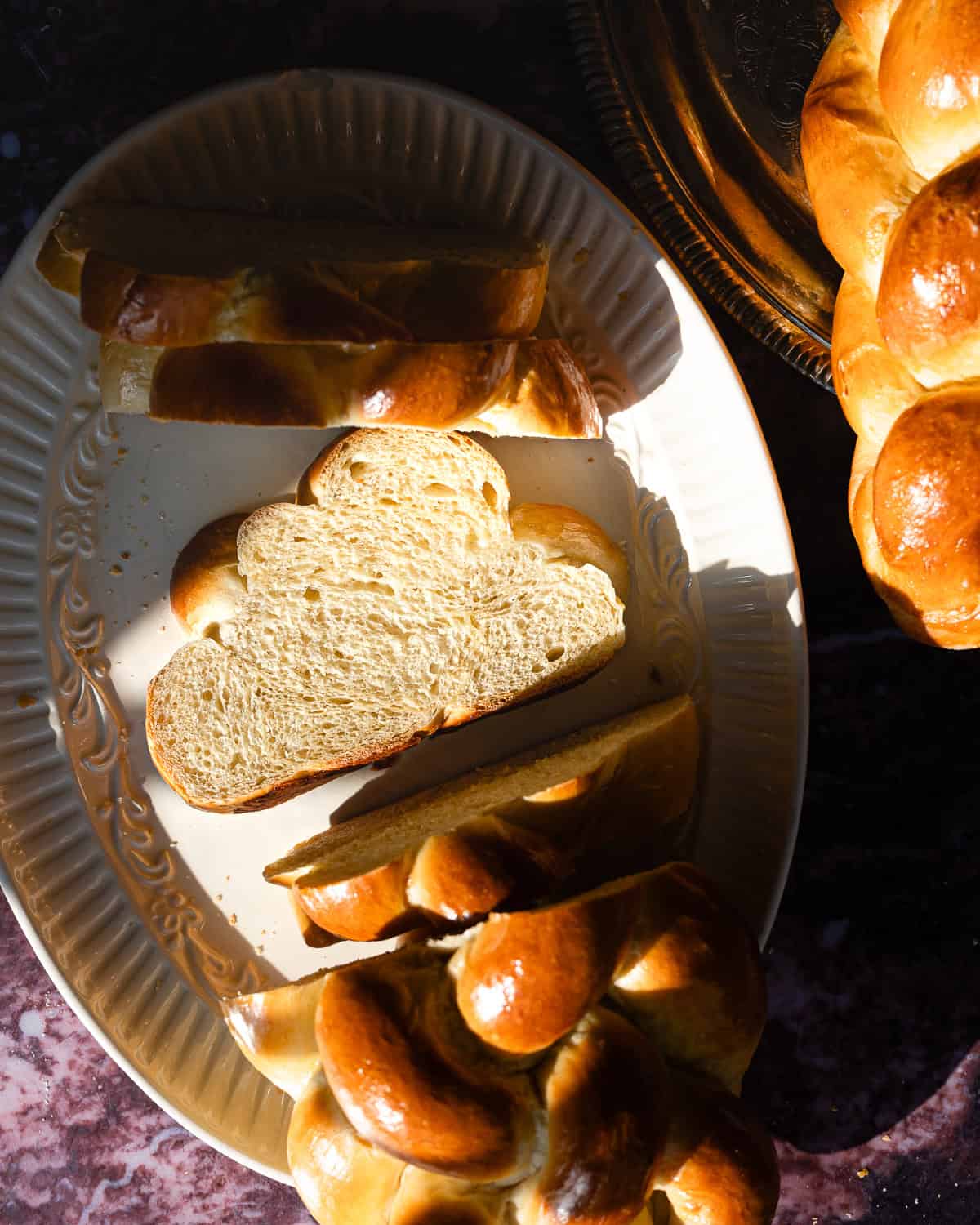
Jump to:
- What is challah?
- Ingredients and Substitutions
- Baking with sourdough discard
- How to make Sourdough Discard Challah Bread
- STEP 1: Make the dough
- STEP 2: Knead the dough
- STEP 3: Bulk proof
- STEP 4: Pre-shape
- STEP 5: How to braid a 6-strand challah
- STEP 6: Final proof
- Tip
- STEP 6: Bake
- Baker's Tips
- What to do with leftover Sourdough Discard Challah
- Recipe FAQs
- You may also like
- Sourdough Discard Challah Bread Recipe
What is challah?
Challah is a type of bread traditionally served during Jewish holidays and special occasions. It’s slightly sweet with a soft and fluffy, brioche-like texture. What makes challah special is, it does not contain milk or butter, relying instead on olive oil and eggs for flavor and softness.
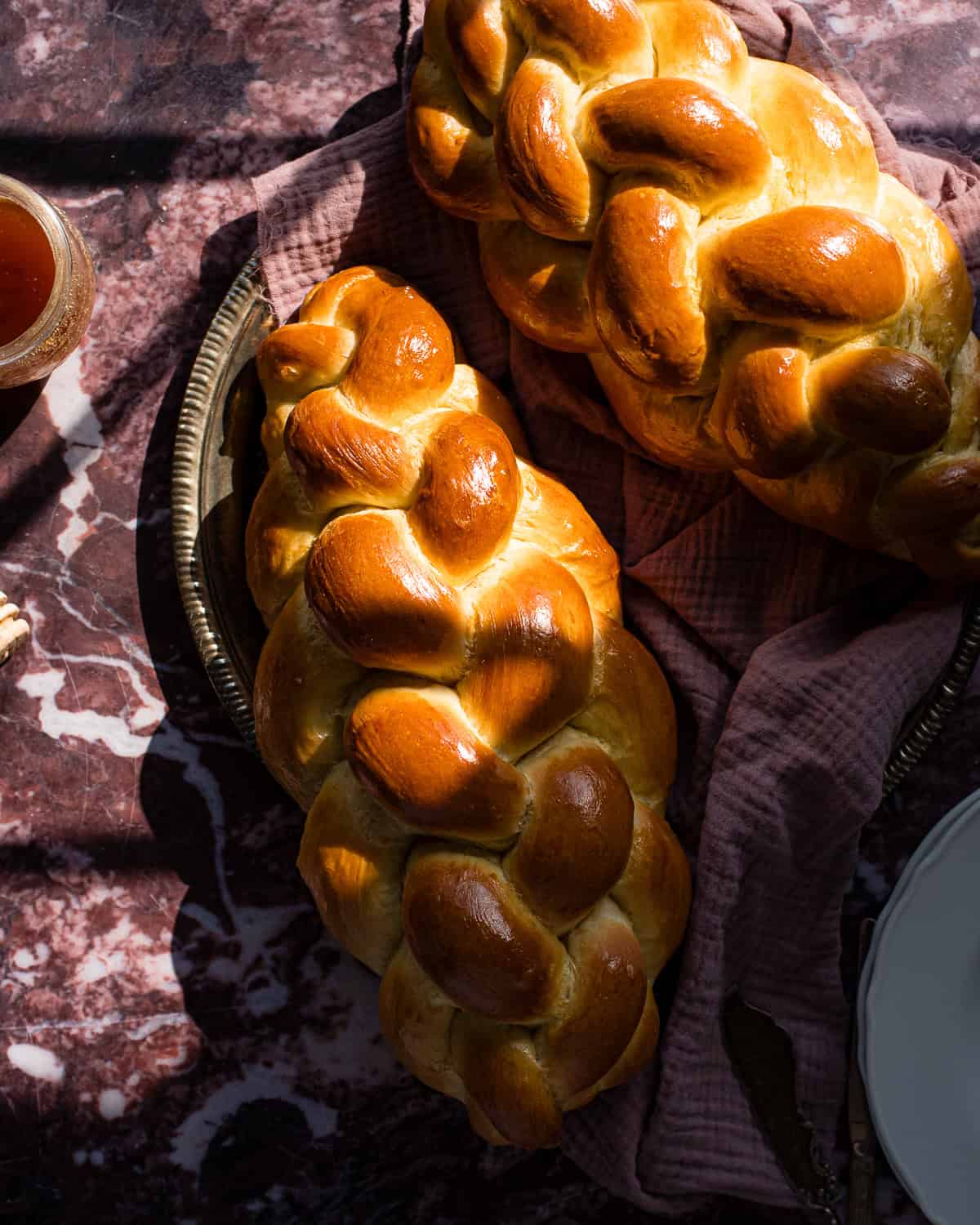
Most people will probably recognize its iconic braided shape and shiny, golden brown surface. With an eye-catching appearance, it’s no wonder challah is served during celebrations.
Ingredients and Substitutions

Bread flour: The high protein content of bread flour creates stronger gluten bond which helps challah hold its shape. Feel free to substitute all-purpose flour if that’s all you have. Do not use whole wheat flour or rye flour since it will change the flavor and texture of your loaf too much (try my Sourdough Discard Whole Wheat Bread or Sourdough Discard Marble Rye Bread recipe instead).
Honey: Adds a delicious flavor to this loaf, feel free to substitute maple syrup or sugar for sweetness.
Olive oil: Tenderizes the dough and imparts softness and richness to challah instead of butter. Feel free to use another type of oil, like avocado, grapeseed, or vegetable, but you will miss out on the rich olive oil flavor.
Egg yolks: Imparts richness to the dough, there’s no substitute for this ingredient.
Active-dry yeast: Instant yeast will work fine for this recipe. you can skip activating the yeast if you opt to use it.
Sourdough discard: You can use both sourdough discard or active starter for this recipe. If you don’t have any sourdough starter, simply add 38 grams bread flour and 38 grams water to your dough.
See recipe card for detailed ingredient information.
Can I leave the yeast out if I use an active sourdough starter?
Yes, you can use an active sourdough starter in this recipe without adding commercial yeast. However, you'll need to extend the rise times in the recipe, as the fermentation process will take longer. For example. Instead of a 30-minute rise time, your dough will probably take about 4 hours. This is because wild yeast in the sourdough starter ferments slower than commercial yeast.
Baking with sourdough discard
Sourdough discard is any portion of your sourdough starter not used to make bread. Since it’s used more for flavor and not for its leavening abilities, you can use your sourdough discard straight from the refrigerator. You don’t need to activate or feed your sourdough starter before using it in this recipe.
If you love quick and easy sourdough discard bread recipes, try my Sourdough Discard Bagels, Sourdough Discard English Muffins and Sourdough Sweet Potato Bread.
How to make Sourdough Discard Challah Bread
STEP 1: Make the dough
Activate the yeast. Whisk the wet ingredients in. Fold the dry ingredients in. Knead the olive oil into the dough.

STEP 2: Knead the dough
Knead the dough for 5 to 10 minutes, until completely smooth. Round the dough into a tight ball.

STEP 3: Bulk proof
Divide the dough into 2 portions. Set one portion of dough aside and cover with plastic wrap. Divide one portion of dough into 6 portions. Round each portion of dough into a tight ball. Roll each portion of dough into a 12-inch rope. Lay the ropes side by side and pinch the tops of the dough together.

STEP 4: Pre-shape
Divide the dough into 2 portions. Return one portion to the mixing bowl and cover with plastic wrap. Divide one portion of dough into 6 portions. Roll each portion of dough into a 12-inch rope.

STEP 5: How to braid a 6-strand challah
Imagine the strands are numbered 1 to 6 and position it as a figure with two arms and four legs.

STEP 1: Lay the strands next to each other and pinch the tops together.
STEP 2: Cross arm 6 under and arm 1 over (strand 1 is now 6 and vice versa).

STEP 3: Take strand 6 (right arm) and place it in between the middle legs (strands 3 and 4).
STEP 4: Cross strand 2 over and place it across to the rightmost position (it becomes the right arm).

STEP 5: Take strand 1 and place it in between the middle legs (strands 3 and 4).
STEP 6: Cross strand 5 over and place it across to the leftmost position (it becomes the left arm)

STEP 7: Now, you'll need to repeat STEP 3 to STEP 6 until all of the strands are braided.
STEP 6: Final proof
Pinch to seal the ends of the challah. Transfer to a parchment-lined baking sheet, cover with plastic wrap and let the dough proof, untouched in a warm spot.

Tip
For an extra shiny, varnished look egg wash the dough twice, immediately after shaping and right before putting it in the oven.
STEP 6: Bake
Brush the proofed challah dough with egg wash. The dough should look puffy and doubled in volume. Bake at 375 F for 35 to 40 minutes until golden brown.

Baker's Tips
- Weigh your ingredients. Measuring by weight is much more accurate than by volume (with tablespoons and cups).
- Both sourdough discard and active starter will work with this recipe.
- Be patient and proof the dough until it is bubbly, well-risen and has noticeably increased in volume. Otherwise, your bread will be dense and gummy.
- The best way to determine whether your loaf is fully baked is to probe the center of the challah bread with an instant-read thermometer. The internal temperature should be between 190 F to 200 F.
What to do with leftover Sourdough Discard Challah
If you can resist eating an entire loaf in one sitting, store any leftover slices in an airtight container for up to 3 days at room temperature.
Leftover or day-old challah is an amazing ingredient. Its pillowy, soft but sturdy texture makes it perfect for recipes like French toast, bread pudding and Almond Bostock.
For long-term storage, wrap slices in plastic wrap, place them in a freezer bag and freeze for up to 6 months. Toast slices until warmed through to enjoy.

Recipe FAQs
Sourdough discard doesn't have the same leavening power as commercial yeast. This recipe requires both discard and a bit of yeast to ensure a good rise, especially since enrichments like oil and egg yolks can slow down fermentation.
Sourdough discard is the portion of your sourdough starter that you remove during the feeding process or any portion of sourdough starter that you don't use to make bread. Instead of throwing it away, it can be used in various recipes, sourdough chocolate chip cookies or sourdough discard bagels.
Absolutely! To use a mixer, combine the ingredients in the bowl of a stand mixer. Start with a paddle attachment to stir the ingredients together. Once the dough appears cohesive, switch to a dough hook and drizzle the oil in with the mixer on. Continue mixing until the dough clings to the hook and away from pulls away from the sides. Round the dough into a ball and proof.
You may also like
Did this recipe rise to the occasion?
★★★★★
Please leave a star rating and a comment. Your feedback helps me create more delicious sourdough recipes. I read and truly appreciate every message.
Don't forget to PIN this recipe on Pinterest to save it for later!
Thank you for your support!

Sourdough Discard Challah Bread Recipe
This section may contain affiliate links
Ingredients
Dough
- 7 grams yeast 1 packet
- 282 grams water
- 28 grams honey
- 3 egg yolks
- 75 grams sourdough discard
- 600 grams bread flour
- 12 grams salt
- 42 grams olive oil plus more for greasing
Egg wash
- 1 egg
Click US Customary to view volume measurements
Instructions
Make the dough
- Activate the yeast: Whisk yeast, water and honey together in a large mixing bowl. Cover the bowl with plastic wrap and let the yeast activate until foamy, about 15 minutes.7 grams yeast, 282 grams water, 28 grams honey
- Whisk the egg yolks and sourdough discard into the yeast mixture until no traces of discard or egg remain.3 egg yolks, 75 grams sourdough discard
- Stir the flour and salt into the wet ingredients. Switch to your hands to knead the mixture until no traces of dry flour remains and a cohesive dough forms.600 grams bread flour, 12 grams salt
- Knead the oil into the dough one tablespoon at a time. Waiting until each addition is absorbed before adding more. The dough will feel very greasy at first and will gradually feel smooth and less sticky as you knead. This may take about 5 minutes.42 grams olive oil
- Cover the bowl with plastic wrap and let the dough rest for 15 minutes. This short rest period will allow the dough to fully hydrate and will make it much easier to knead.
- Turn the dough out onto a clean work surface, and knead the dough until completely smooth, about 5 to 10 minutes. The smoother the dough the easier it will be to roll the dough into ropes and the better your braid will look.
Bulk fermentation
- Round the dough into a tight ball. Place the dough into a clean, lightly-oiled bowl, cover the bowl with plastic wrap and let the dough rise until doubled in volume, about 30 to 45 minutes.
Pre shape
- Turn the dough out on a clean work surface. Using a bench knife, divide the dough into two portions. Round one portion, return it to the bowl and cover with plastic wrap.
- Working with one portion of dough, divide the dough into 6 even portions. Round each portion of dough into a round ball. Cover the balls of dough with plastic wrap to prevent them from drying out.
- Working with one portion of dough, roll the dough into a 12-inch rope. Set aside and cover with plastic wrap. If the dough snaps back, let the dough rest for 15 minutes before continuing. Repeat with the remaining dough portions.
Braid the dough
- Lay the ropes side by side and pinch the tops of the dough together.
- Imagine the strands are numbered 1 to 6 and position it as a figure with two arms and 4 legs.
- STEP 1: Cross strand 6 over and strand 1 under (strand 1 is now 6 and vice versa).
- STEP 2: Take strand 6 and place it in between the middle legs (strands 3 and 4).
- STEP 3: Cross strand 2 over and place it across to the rightmost position.
- STEP 4: Take strand 1 and place it in between the middle legs (strands 3 and 4).
- STEP 5: Cross strand 5 over and place it across to the leftmost position.
- STEP 6: Repeat from STEP 2 until all of the strands are braided.
- STEP 7: Pinch the ends of the dough together to seal.
- Repeat with the second portion of the dough.
- Transfer the dough to a parchment-lined baking sheet.
- Whisk the egg. Using a pastry brush, brush the dough with egg wash. Cover with plastic wrap and let the dough rise in a warm place.1 egg
Final proof
- Let the dough rise until it looks puffy and doubled in volume, about 30 to 45 minutes.
Prep
- Once the dough is close to being fully proofed, preheat the oven to 425 F.
Bake
- Brush the dough with egg wash again. Move the dough to the oven, without opening the oven door, turn the temperature down to 375 F and bake for 30 to 45 minutes or until the loaf is golden brown and the temperature measures at least 190 F when probed with an instant-read thermometer.
Tips
These recipes were developed and tested using grams for precise measurements. To increase your chances of success, I recommend investing in a kitchen scale. I've included rough volume estimates (in tablespoons and cups), but they might not be totally accurate.
Remember all ovens are unique, these recipes were tested in my oven which runs cooler than others. You might need to lower the temperature if your bake appears to be browning too quickly. Monitor your bake closely and make adjustments if needed.
Notes
- Both sourdough discard and active sourdough starter will work for this recipe.
- Make sure your yeast is not expired before attempting this recipe.
- Egg washing the dough twice imparts a shiny, golden brown look to challah bread.
- Preheating your oven to a high temperature, encourage the bread to rise, while baking it at a gentler heat will prevent it from drying out and burning.
Nutrition
I am not a nutritionist or dietitian, any nutrition information provided is an estimate.

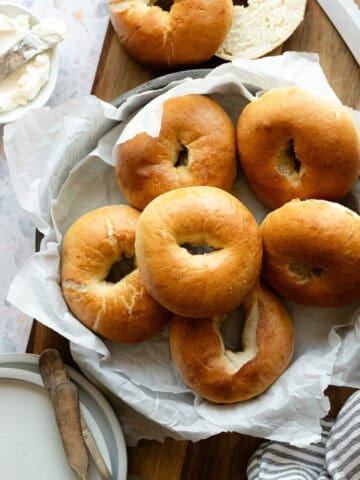
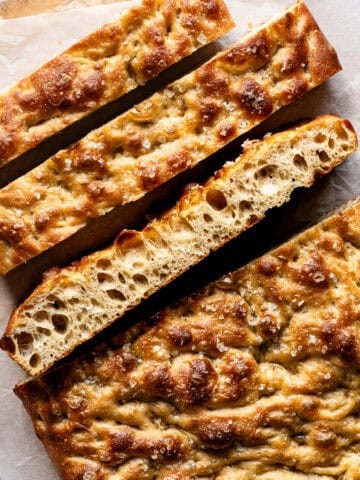
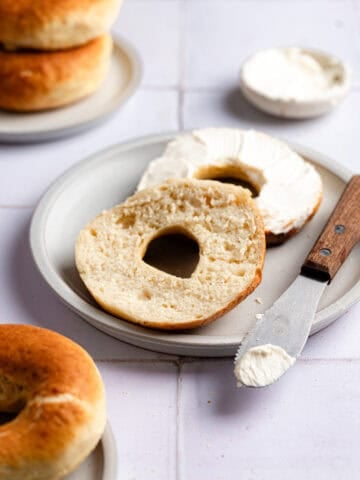
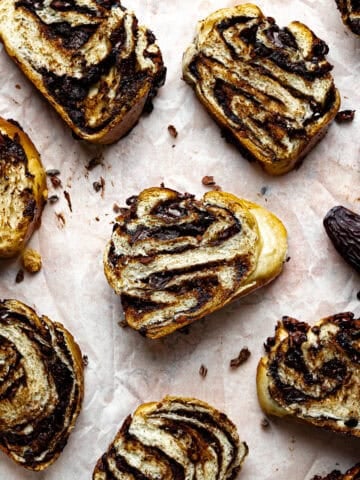
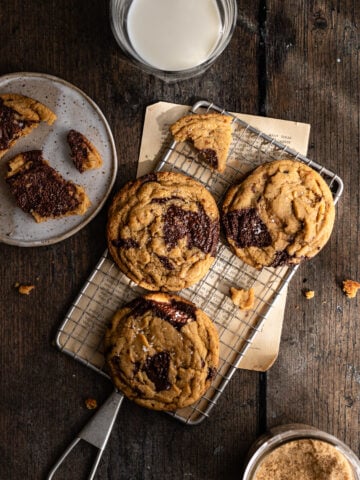
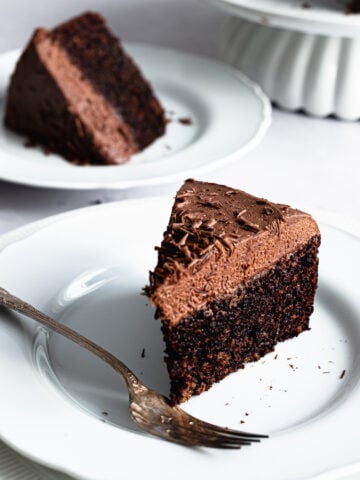
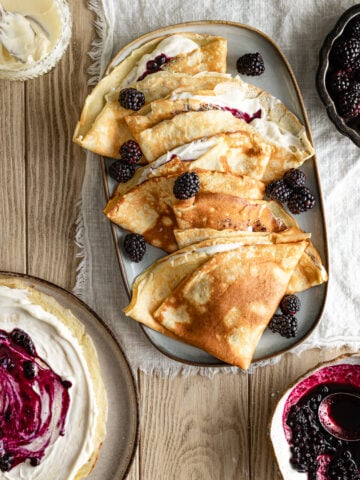
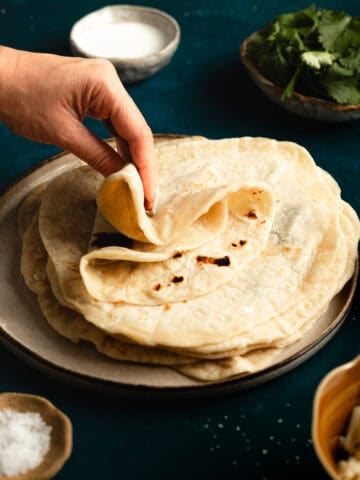
Emily Kendrick says
Simple and healthy challah recipe that is also incredibly tasty
Hannah Dela Cruz says
I'm so happy you loved it!
Tina says
Is it confusing to try to twist it all together?
Hannah Dela Cruz says
You can shape the loaf however you like!
Tina says
Wow 🤩 quite the fancy things! Haven’t tryed it yet but looks very pretty!
lokekei says
not sure if I missed it out, but the recipe directions does not state when to mix in the oil. I went ahead to mix it with the wet ingredients anyway, hope it turns out alright!
Make It Dough says
That should turn out just fine!
Christina says
Same question: the recipe instructions do not include the oil anywhere so I never added it… when is it supposed to be incorporated?
Make It Dough says
Hi Christina! So sorry, a major oversight on my part. It should be kneaded into your dough after it has formed a cohesive mass. I edited this recipe to include the oil!
Ruth says
This looks wonderful. I have made traditional challahs for many years, and will try this next time. You are correct in saying that challah is made with eggs and without dairy content ( to comply with Jewish kosher rules if eaten with a meat meal), and typically contains oil too.
Catarina says
I'm always a bit afraid of enriched doughs and a long cold proofing because I don't want the bread too acidic. I really like the flavor of this bread, made with sourdough but not sour at all 🙂
Sharon Griswold says
After you braid the dough, you said to proof inside your oven with no heat. For about how long? Am I waiting for the braided dough to rise/ double in size again? Thank you!
Make It Dough says
It's difficult to give a time estimate here as all starters ferment at different speeds. You're looking for your loaf to increase in volume and appear balloon-like and marshmallowy!
CANDI says
Is this made with just discard or a Levain?
Make It Dough says
This is made with levain (active sourdough starter)
Make It Dough says
This is made with levain!
Nitzan Barlev says
How long do you usually proof after shaping before putting into the hot oven?
Sml Frmn says
How long is the final proofing?